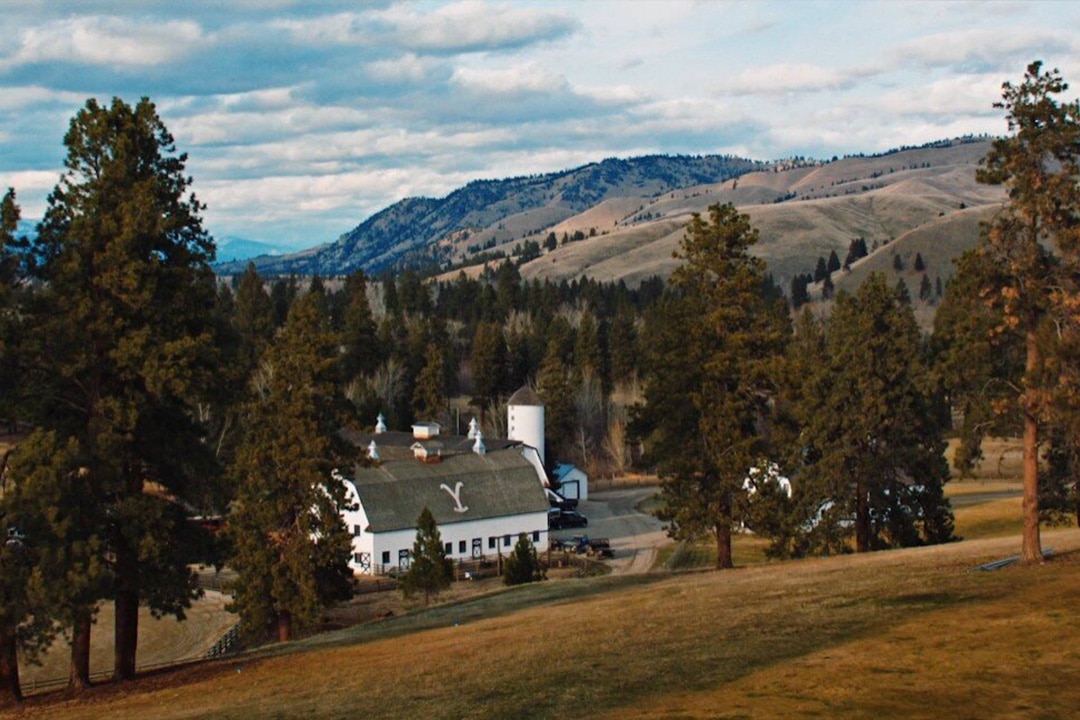Create a free profile to get unlimited access to exclusive videos, sweepstakes, and more!
How Scientists and Musicians Are Transforming Yellowstone's Vibrations into Music
You’ve heard of acid rock, alt rock, prog rock, soft rock, and punk rock, but what about igneous rock?

Yellowstone is one of those places where you can almost feel the age and power of the Earth. While it doesn’t top the National Parks charts in size (that honor goes to the Wrangell-St. Elias National Park and Preserve in Alaska), it is undeniably the most impressive landscape in the lower 48 states. Hot springs, geysers, canyons, and lakes are a testament to Yellowstone’s violent volcanic past. To stand there is to witness unadulterated beauty, painted over a foundation of pure natural violence, which is part of what makes it such a perfect setting for Yellowstone, a modern Western set in the wildest place left in the West. The first half of Yellowstone’s fifth and final season hits Peacock May 25, 2023 (you can watch the first four seasons in the meantime) and the series will return to wrap up this November.
After Old Faithful, the thing Yellowstone is most known for is being the volcano that will wipe humanity off the map the next time it starts feeling feisty. While it’s unlikely that Yellowstone will pop off a super-eruption in the near future, it does deliver smaller shakeups all day, every day. It’s estimated that Yellowstone experiences between 1,500 and 2,500 earthquakes every year — that’s an average of four to seven earthquakes per day — according to the United States Geological Survey. We know that because of the Yellowstone Seismic Network (YSN), a collection of several dozen seismometers deployed all over the park and operated by the University of Utah Seismograph Stations.
RELATED: Yellowstone super volcano unlikely to erupt anytime soon
Seismographs translate vibrations which are often too faint for human ears to hear into a visual representation we can examine and learn from. Still, squiggly lines on a roll of paper can’t elicit the same physical sensations or emotional response you experience when feeling the Earth rumble beneath your feet. That’s something Domenico Vicinanza, a particle physicist and composer at Anglia Ruskin University, set out to fix in collaboration with musician Alyssa Schwartz.
Seismograph studies Yellowstone
Yellowstone benefits from an incredible score by composer Brian Tyler, but the real Yellowstone has been making music for at least 17 million years, and now we can finally hear it. Vicinanza sifted through data from each of Yellowstone’s seismometers, looking for the one with the most interesting looking readings. He selected a station at Yellowstone’s Mary Lake, and fed tremor readings into software he programmed. That software translated the position of the seismograph’s needle — represented by the drawn line — into a pitch by transposing it onto a musical scale. The result was a series of notes, representing the actual seismic activity at Mary Lake, which could be played by a musician.
“By listening to the sound, you can actually have a mental image of what’s happening there. You can feel how regular or irregular, how smooth and quiet — or how absolutely dramatic… It’s not like language. It can get immediately to this dedicated part of the brain that is connected to feelings and memories,” Vicinanza said, via The Washington Post.
Alyssa Schwartz performed the translated Mary Lake composition in front of a live audience at the 2023 Internet2 Community Exchange conference yesterday. And while there are moments which feel familiar, as if they might have been composed by a human artist, other moments are erratic and unpredictable.
“Playing music that comes from scientific data is unique, because it doesn’t follow the types of patterns — chords, arpeggios — that musicians are typically trained in,” Schwartz told The Washington Post.
The practice of translating inaudible data into an audible output is known as data sonification and has been used to tune into the silent broadcasts of everything from black holes to the movements of an individual bacterium. They aren’t perfect representations of the thing they’re translating, but they offer a way for us to shrink ourselves down to the size of a microbe, up to the size of a galaxy, or just to listen a little more closely and experience things which would normally be well outside our abilities.
Catch up on Yellowstone before season 5 hits Peacock on May 25, 2023!


























